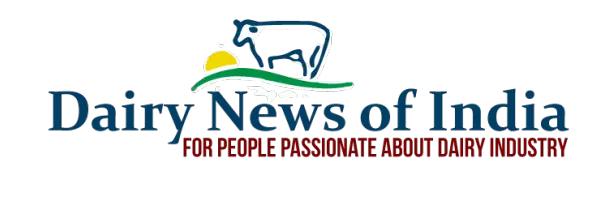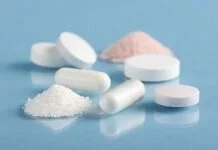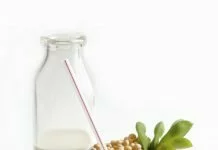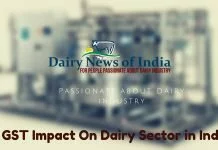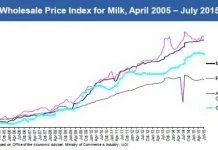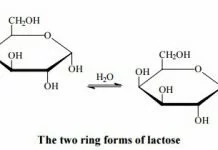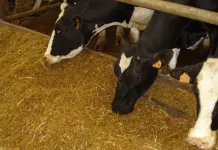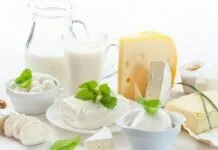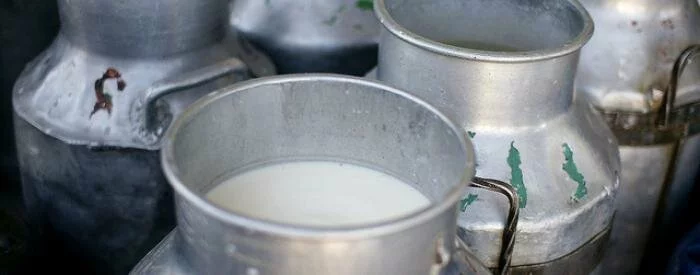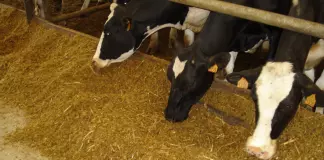Source:fnbnews.com
Though latest information is indicative that GST (Goods and Services Tax) would be applied at a minimum of 18% on all products, whether it is applicable for all dairy products is not yet clear. It would be unfortunate if such a bracket is applied to processed dairy products. Compared to other industries, the dairy sector has direct implication on the milk producers in India.
Dairying in India is unique in more than one respect. It is the most intensive employer plus the best employer for the landless labour in India. Milk contributes close to the third of gross income of rural households and in the case of those without land, nearly half of their gross income. An estimated 68 million rural households, of which about three-fourth are landless, marginal or small farmers are engaged in milk production.
Milk ensures food security and nutritional security including in rural India. If a farmer owns just one milking animal, he will not commit suicide. Milk ensures daily income to him and some food for his family. The distribution of rural income, as reflected in the gini coefficient (the measure of inequality) is very low for the dairy sector, indicating that the ownership and the income are more evenly distributed and the progress in this sector will result in a more balanced development of rural economy.
Milk production – 4-4.5% growth
Milk is a single agricultural crop that has highest value, more than combined value of wheat and rice. Milk production has shown rapid growth of 4 to 4.5 per cent per annum during the last 25 years. Livestock sector accounts for 28-30 per cent of GDP of agriculture.
Milk provides the best bioavailability of protein, in particular to the vegetarians. Milk is, an essential nutritional requirement of human beings. The children largely depend on milk for nutrition. Higher milk production, therefore, will also improve the health status of the farmers and people at large. High cost of milk and milk products shall make it unaffordable to poor strata of society.
Milk is highly perishable. Therefore its processing, packaging and conversion to long life products is more a necessity than a luxury. Processed milk products e.g., milk powders, butter, ghee, and cheese, extend the life of milk that would otherwise perish. This also makes the setting up of facilities for milk processing and manufacturing of dairy products highly capital-intensive. Similarly, handling of dairy products requires highly reliable and unbreakable cold chain needing heavy capital investment in the network for sales and distribution.
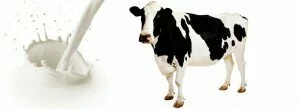
Considering these factors, it is reasonable that at par with agriculture produce, the milk products be also exempted from any excise duty, sales tax and similar other taxes. This gesture of the government would go a long way in accelerating the growth of the Indian dairy industry.
Existing Taxation Regime
According to the existing taxation regime there is no tax on any of the fresh dairy products like raw milk, pasteurised–packaged milk, dahi, chachh, lassi and their variants. None of the dairy products attract excise duty except for the sterilised-sweetened-flavoured milks that also in a very few states. Mandi fee that once was levied on ghee across India has been abolished except in Uttar Pradesh and Rajasthan and that too has been reduced to 2% only. Value-added tax is levied at 2-5% on milk powders, 5% on chakka (basic raw material for shrikhand), table butter, cream, and UHT milk packed in cartons.
It is widely expected that GST will be an amalgam of VAT, excise duty, octroi, entry tax, mandi fee, cess and so on. From unconfirmed reports it is known that the lowest rate of GST proposed is 18%. The Union government has worked out this percentage factoring all the aforesaid levies. It would be appropriate that the dairy industry is classified as farming and the dairy products treated as farm produce rather than processed foods.
High rate of GST, if applied, would have direct implication on milk producers. Dairy is perhaps the only industry that is able to pay to the milk producer about 70% of what is charged from the consumer. No other food processing industry in India is able to meet such high expectations of the farmers.
In fact in most countries that have well developed dairy industry, the highest proportion of the consumer that is passed does not exceed 35% of the amount paid by the consumer. It is apprehended that high GST would incite the industry to reduce the milk prices paid to the milk producer. High rate of GST might also increase the consumer prices of dairy products substantially. The consumer would have a tendency to reduce the consumption of processed dairy foods as well as milks. If the consumer moves more towards the traditional vendor, the organised dairy sector that has been wresting the market of vendors, would contract in size and consequentially reduce its reach to the milk producer. This would halt the expansion and investment in the organised dairy sector including the cooperatives.
Proposed GST
It is well known that milk production in India has been consistently growing at 4-4.5% annually. This is because the milk producer in India has seamless farm to fork linkage through direct access to the ever expanding market for milk and milk products. High rate of GST taxation might reverse this cycle. This would cause a decline in the prices of raw milk as paid to the milk producer. The milk producer would find it difficult to manage cows and buffaloes. He might shy of making investment in purchase of livestock assets for increasing milk production.
It is imperative that a softer view is taken while imposing GST regime on the dairy industry. The government ought to have a farmer-centric approach. It should create a special class for the dairy industry by exempting all types of liquid milks, sterilised milks, dahi, chhachh, lassi, shrikhand, paneer and so on from levy of GST and create a special category by levying 4% GST on all other dairy products. Recovery of low tax through dairy sector should not be considered as a loss to the national exchequer but an investment that would spur growth in milk production, ensuring national food and nutritional security and enhancing rural prosperity.
